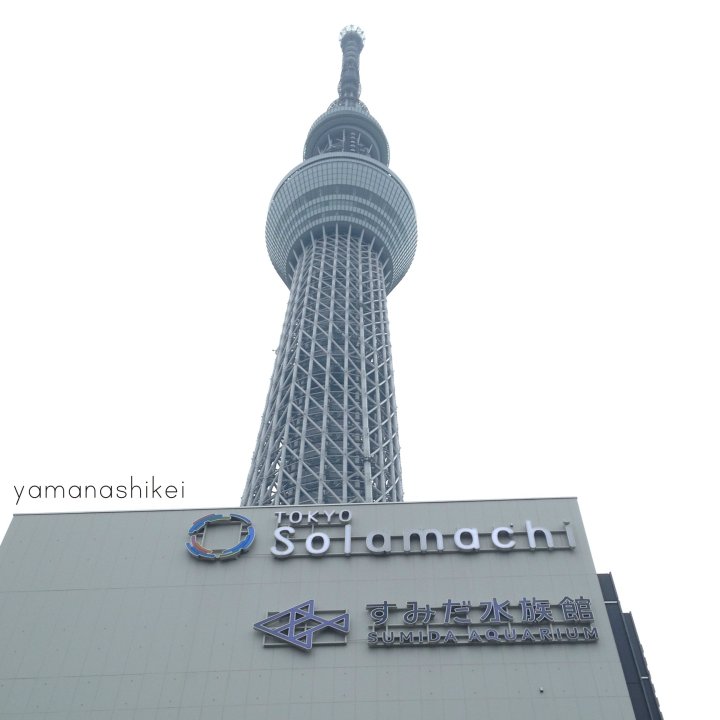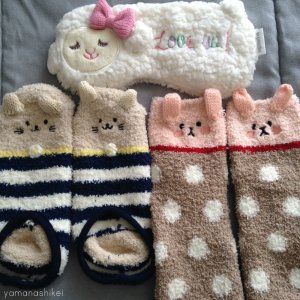Even though my fiance’s family was in town, I made plans to meet up with friends around the New Year because my one-month trip to Tokyo was speeding by surprisingly fast…
☆*✲゚*。☆*✲゚*。☆*✲゚*。☆*✲゚*。☆*✲゚*。☆。*゚✲*☆。*゚✲*☆。*゚✲*☆。*゚✲*☆。*゚✲*☆
2014年12月29日
The Christmas holiday in Japan is not a national holiday, so students still have to go to school and salarymen still have to work. My fiance managed to get quite a bit of time off of work during the month I was in Japan, but he still had to go to work a few times. My fiance had to work again on Sunday, so I arranged to meet up with a friend from grad school in America.
My friend studies in Fukui Prefecture 福井県, but he lives in Tokyo, so we met in Ikebukuro 池袋 and found a restaurant to eat lunch. It was a rainy day and we didn’t make any plans ahead of time, which probably wasn’t the best idea, because after finding a couple of places closed we ended up back at Tokyo Skytree 東京スカイツリー again. While Christmas is not a national holiday, New Year’s is a national holiday with time off from school and work, and so a lot of public museums and other attractions are also closed. Also, the rainy day limited us to indoor activities.
Once we got to the Skytree the clouds in the sky promised a very poor view indeed. We checked the visibility chart at the ticket booth, but again the visibility was very low. You could see Asakusa, which is very close, but the visibility to Yokohama was poor, so we decided not to go up. The Tembo deck (350 m) is ¥2,060 and the Tembo Galleria deck (450 m) is ¥1,030. Paying ¥3,090 (about $30) on a cloudy day didn’t seem like a good investment. So instead we went to go buy omiyage お土産 in the Solamachi shopping centre.
Omiyage お土産
What is omiyage?
If you know anything about Japanese culture, you probably know about omiyage. Roughly translated, omiyage means souvenir, but in terms of Japanese culture it’s much more than that. In Japan’s gift-giving culture, when you travel you usually buy your coworkers and friends an omiyage or a small gift, usually something that is particular to the region that you’re visiting.
Although I don’t know when the tradition of omiyage started, the tradition goes back to Shinto pilgrims of Japan who brought back souvenirs, such as charms and rice wine cups, from the shrine they visited as proof that they actually went there. Whoever they shared these souvenirs with would then also be blessed as if they had gone on a pilgrimage. When the railway system was built it got easier to bring food as omiyage even though food preservation was difficult, and the omiyage tradition began.
Gift-giving is very important in Japanese culture, and if you forget to bring back omiyage when people know that you’ve gone a trip, it will seem antisocial to your coworkers. Sometimes gift-giving can get really intense, because if you receive a gift you must reciprocate with something of equal or greater value (like when my fiance and I got a wedding gift from family friends). I’ve never been embroiled in a gift-giving battle, where one party tries to outdo the other with increasingly better and more expensive gifts, but I’ve heard many stories of long years of trading expensive gifts.
My friend was shopping for omiyage for his coworkers at his Japanese university in Fukui Prefecture at Skytree but in the end he decided to get omiyage from his hometown, which is another suburb of Tokyo. Since a lot of people come to tourist attractions like the Skytree in Tokyo, he thought his coworkers would be more interested in local goods from his hometown, where not many people visit in Tokyo. I bought omiyage at Tokyo Skytree for my friends and family in America because it’s a more recognizable attraction for foreigners. I also bought Skytree cookies for my friend from Yamanashi Prefecture 山梨県, who I planned to meet after the New Year.
What kinds of omiyage should you buy?
What kind of omiyage you buy depends on where you are visiting and who you are buying for.
In Japan, the most common omiyage is small snack-type foods that come with individually wrapped delicacies in a colorful package. The snacks are usually made with specialty ingredients from the prefecture or city you are in, and usually they have a common theme. For example, Yamanashi Prefecture is famous for peaches and grapes, and you can buy cakes with these flavors. These are best to buy for coworkers or groups of friends. Make sure to take in account how many people you work with and what kinds of sweets or foods are the most popular in the region when picking out a group gift. You don’t want too few, but you also don’t want to buy too many (since it’s hard to divide up any remaining food). The most popular gifts are usually displayed prominently – or you can ask the clerk which is the most popular seller.

Mt Fuji omiyage – Strawberry Cheese Cake Kit Kat. There is a specialty Kit Kat flavor for every region and season! – photo by kei
If you buy omiyage for your friends, you can decide ahead of time how much you want to spend on gifts. Smaller boxes of snacks are always an easy gift, but if you want to get more personalized gift, you can pick a kind of craft that is unique to the region, or something that is useful (e.g. grape bath soap from Yamanashi Prefecture). I always try to think about whether or not my gift will be useful, because I would rather give a friend something they could use rather than something that they will set aside and forget about.
If you are buying omiyage for your in-laws, I think that it’s important to pick something they actually will like and use. Buying a local sweet for someone who doesn’t like sweet things is not the best idea, so try to find out these kinds of things before you buy omiyage. Things that I bought for my mother-in-law included bath salts, loose tea leaves, and a dog leash. She is very picky, and so I made sure to buy gifts that fit her tastes. However, after the first few omiyage I bought her, she told me to consider my finances, basically hinting to stop getting omiyage. So there are a lot of things to consider when buying omiyage for in-laws, but if you put some thought behind the gift they will more than likely be impressed, and it won’t cost a fortune.
The gift shop should provide gift-wrapping in the form of a nice bag or box so you won’t have to wrap it yourself, as well as another bag to transport it in. Gift wrapping is almost as important as the gift itself, so make sure not to get the wrapping dirty or mangled while you transport it. If you buy food you want to make sure it won’t spoil before you can give it to the recipient so check the expiration date, which will be written with the year, then the month, then the day: YYYY.MM.DD.
It’s best to buy your omiyage at the end of the trip so that it won’t get damaged or spoil. Make sure also to consider how much space you have for transporting your omiyage so that you don’t overpack! I have never experienced this myself, because I’ve never bought too much so that it wouldn’t fit in my bags when I went home, and had to find another bag to transport it so that it wouldn’t get damaged… But just in case this happens to you, beware!
What kinds of souvenirs are available in your country? In other countries you’ve lived in? What is your favorite Japanese omiyage?
Next Up: Japan Diaries Day 26 – In-Laws







Excellent post on the culture of gift-giving. I feel like that just a tiniest bit with my friend JP who always sends me thoughtful gifts in the mail. I’m behind, needless to say, I can’t seem to find the post office here yet. Hahahhaa.
LikeLike
You haven’t found the post office yet? I had to find it pretty soon after I moved. Haha I guess it’s not as necessary to go to the post office these days…
LikeLiked by 1 person
Very true. Letters and such are a dying breed 😛
LikeLike
This kind of gift giving seems to be everywhere in Asia. Needless to say also Chinese do this but usually it’s more like “the more expensive the better”
So when my in laws visited us in Finland few years back they bought chocolate alone already worth for over hundred euros (113usd).
My wife sometimes has customers who buy for their colleagues little LV things worth all together up to 10k euros, just insane
LikeLike
That’s intense! I’m so glad I don’t have connections with people who do crazy expensive gifts, because I can’t afford that. I guess it’s a status thing in Asia, to show how rich they are!
LikeLike